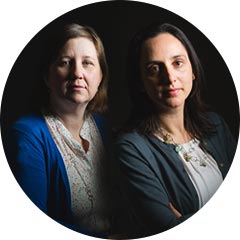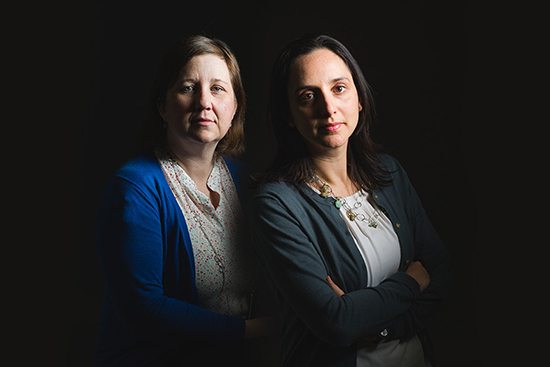Explaining Violence: Intimate Partner Violence
Partner abuse is everywhere, but the same interventions don’t work for everyone
In this four-part series, BU Today looks at the work of BU researchers and medical experts who study and treat the causes and consequences of violence. Considered together, the four stories depict a vicious cycle of hurt, frustration, and vengeance that reverberates through every aspect of American life.
Intimate partner violence may be the most widespread form of abuse with the greatest ability to hide in plain sight. In fact, BU researchers say, even many people involved in abusive partner relationships don’t think of the mistreatment as abuse. Yet over the course of a lifetime, one fourth to one third of women in the United States will be abused by an intimate partner. That abuse can take many forms, from sexual exploitation to physical violence to controlling intimidation to hurtful mind games, and it can start at age 11 or 12. Studies have shown that in any recent 12-month period, 20 percent of high school girls who are in a relationship have been subject to physical or sexual violence.
Partner violence can come from many directions: it can be perpetrated in person or it can happen virtually. It can involve a current dating partner or a partner from a long-gone relationship. It can be hard to recognize and hard to stop. At BU, two experts who have worked for years on different aspects of intimate partner violence are collaborating to find better ways to do both.
Emily Rothman, a School of Public Health associate professor of community health sciences, and Megan Bair-Merritt, a School of Medicine associate professor of pediatrics, teamed up most publicly last year as guest editors of an issue of the American Journal of Preventive Medicine devoted to adolescent dating violence. There they laid out the case for more research involving the neighborhood and societal-level influences on that violence. “This is a nascent area of intervention research,” the authors wrote, “but one that has the potential to make contributions to how the field identifies more powerful solutions to violence prevention, which is now widely recognized as one of the most urgent public health priorities in the world.”
Toward that end, the two researchers will soon begin a three-year project, funded by the National Institute of Justice (NIJ), to find ways to ask questions of survivors and perpetrators that will better reveal instances of adolescent dating violence. The research will include input specifically from LGBTQ, Native American, black, and Latino youth.
“The problem,” says Rothman, the principal investigator on the $500,000 grant, “is that the ways we are asking kids if they experience dating violence are not very good, because they were invented a long time ago when the way kids got together and the things they did to each other may have been different.”
Rothman, whose best known scholarship describes the influence of alcohol on adolescent partner violence, and who also studies pornography and dating abuse (yes, there is a connection), cites online stalking or revenge porn (posting naked pictures, or faked naked pictures, of a dating partner) as examples of abuse that would fly below the radar on older dating violence surveys. She and Bair-Merritt hope to develop a more relevant survey that reflects things that happen today, validate the results, and get it in the hands of health care professionals.
And on a separate front, they are preparing an application for a grant that will test a brief intervention designed for adolescents receiving pediatric primary care, with the goal of training health care providers to recognize abuse and educating 11- to 14-year-olds about healthy dating behaviors.
The two researchers are well prepared for both projects. Rothman is currently reviewing data from a three-year NIJ-funded study done at the emergency department of Boston Medical Center (BMC), which recruited 170 15- to 19-year-olds who had come to the hospital for nonurgent medical treatment and other reasons unrelated to partner violence and had answered yes to more than one survey question about their behavior toward a dating or sexual partner in the past month.
“This is a nascent area of intervention research,” the authors wrote, “but one that has the potential to make contributions to how the field identifies more powerful solutions to violence prevention, which is now widely recognized as one of the most urgent public health priorities in the world.”
“The survey doesn’t ask if they are a perpetrator,” says Rothman. “It says, ‘Have you done any of the following things: pushed, punched, slapped, or bit your dating or sexual partner?’” The study will help test the effectiveness of a technique called motivational interview intervention.
It’s a formula that has been proven to help people stop smoking and to reduce drinking, but until now hasn’t been tested with perpetrators of dating violence.
The researchers conducted follow-up interviews three months and six months after the intervention. Rothman says it’s too early in their data analysis to claim success, but she is encouraged by what she sees. She also has evidence from a smaller randomized pilot study of the interview intervention indicating that people subjected to the intervention were more likely than others to use healthy behaviors (talking to friend about concerns before going to a party, asking a buddy to step in if he sees you getting upset or jealous, talking to a doctor about substance abuse) to guard against being abusive. If the data from the larger study support that conclusion, Rothman’s next steps would include an effort to see if the technique can be transferred to other settings or used by other mentors, such as parents or friends.
While Rothman studies the effectiveness of her efforts at BMC’s emergency department, Bair-Merritt is digging into data from her research among the notoriously understudied population of inner-city youth, in this case 16- to 19-year-old girls in Baltimore. For that project, also funded by the NIJ, she and coresearchers from Johns Hopkins University drove through the streets of Baltimore at night and recruited young women in abusive relationships.
At first, the researchers were worried that they would have a hard time finding such subjects, says Bair-Merritt. It turned out that almost nobody had to be excluded. “So either that was just our experience,” she says, “or violent relationships are pretty normative.”
The researchers enrolled 160 girls who reported being in a relationship with a violent male partner, and all of them agreed to send daily reports via cell phone, chronicling the ups and downs of their relationships.
“They would answer questions every single day,” says Bair-Merritt. “They would tell us about any violence their partner perpetrated.” The researchers asked about physical abuse, about emotional abuse committed by either partner, about alcohol and drug use, about any material support provided by either partner, and about the couples’ emotional bond. “We asked, ‘How close do you feel to this person? How jealous are you of him and how jealous is he of you?’”
With those reports, she says, “we can literally see on the day before or after a violent episode how the young women report feeling about their partner.”
Although it is too early in the analysis to be definitive, the pediatrician says her research appears to support the premise that romantic relationships of adolescents look different from romantic adult relationships, and that, among other things, adolescents may be more likely to view abuse as a normal part of a relationship, continuing to feel attached to their partners and/or view some of the abusive actions as evidence of love. Those are crucial distinctions, Bair-Merritt says, because interventions that focus mostly on safety planning and resource connection may not be sufficient. “Sitting down with women and saying, ‘OK, if there were a violent episode, do you have a neighbor you can call?’ is important, but adolescents also need discussions about their relationships and what is or is not healthy,” she says. “Also, a lot of what has been studied and developed with regard to intervention focuses on white, straight, and upper- or middle-class kids. We must bring a more diverse lens to the development of interventions for adolescents.”
“A lot of what has been studied and developed with regard to intervention focuses on white, straight, and upper- or middle-class kids,” says Bair-Merritt. “We must bring a more diverse lens to the development of interventions for adolescents.”
Bair-Merritt hopes the Baltimore project will yield some guidance about ways to adapt adult interventions for racially and ethnically diverse younger people of all social classes, or to create new, more effective interventions for teens.
Bair-Merritt and Rothman have been working with different groups, but they both have run into the same frustrating obstacle: survivors and perpetrators routinely fail to realize that their relationships are abusive. Bair-Merritt has found that even the most blatant forms of abuse can have a surprisingly slight influence on intimacy. “Adolescents do not always recognize what’s healthy versus unhealthy, and they have a real need for closeness. For example, they may say, ‘He loves me a lot. He texts me all the time and always wants to know where I am.’”
Rothman, who has worked with college students as well as adolescents, has noticed a similar reluctance to see a very different type of behavior for what it is—abusive. “I’ve been amazed at how little some college students know about what counts as abusive behavior,” she says. “There are people who don’t realize, for example, that breaking into your partner’s phone and snooping through their texts counts as controlling, abusive, illegal behavior.” Other forms of psychological abuse seen often on college campuses are gaslighting—when one partner controls and manipulates the psyche of the other, sometimes persuading the weaker partner that he or she is crazy—and ghosting, the hurtful abandonment of one partner by simply ending communication and disappearing without the slightest explanation.
“It’s possible that these days there are more people in open relationships or dating multiple people at the same time,” says Rothman. “But a lot of what people talk about in my research in emergency departments is still cheating. So the issue of sexual fidelity and snooping through phones to figure out if a person is cheating are now things that I am very much thinking about.”
While she studies the applicability of her interview interventions for use by parents, and while Bair-Merritt explores the possibility of adapting interventions designed for adults for use with adolescents, Rothman has an idea for yet another adaptation. She and Casey Taft, a MED associate professor of psychiatry and a staff psychologist at the Department of Veterans Affairs National Center for PTSD, have applied for a grant to fund the adaptation of Taft’s Strength at Home program, designed for service members who have engaged in partner violence, to suit a college population.
Because Taft’s several years of research have shown that the risk of partner violence increases threefold for vets who suffer from PTSD, the 12-session Strength at Home intervention aims first at teaching vets to talk about past trauma, as well as current relationship problems.
“A lot of what we do is not specific to veterans,” says Taft. “When we talk about how trauma impacts relationships, it is really pretty invariant across civilians and veterans. With college students, it may not be trauma they are talking about. It may be negative life events.”
Rothman seconds Taft’s suggestion. “I believe that there are many college students who have experienced trauma, and many may have attachment disorders that increase the likelihood that they will use unhealthy relationship behaviors,” she says. “The exciting thing is that Casey has demonstrated that you can change somebody’s partner-abuse behavior. For most people, it may take more than regular old counseling to do it, but it can be done.”
This Series
Also in
Explaining Violence
-
November 14, 2016
Explaining Violence: Lessons from Terrorists
-
November 11, 2016
Explaining Violence: Healing the Wounds of Gun Violence






Comments & Discussion
Boston University moderates comments to facilitate an informed, substantive, civil conversation. Abusive, profane, self-promotional, misleading, incoherent or off-topic comments will be rejected. Moderators are staffed during regular business hours (EST) and can only accept comments written in English. Statistics or facts must include a citation or a link to the citation.